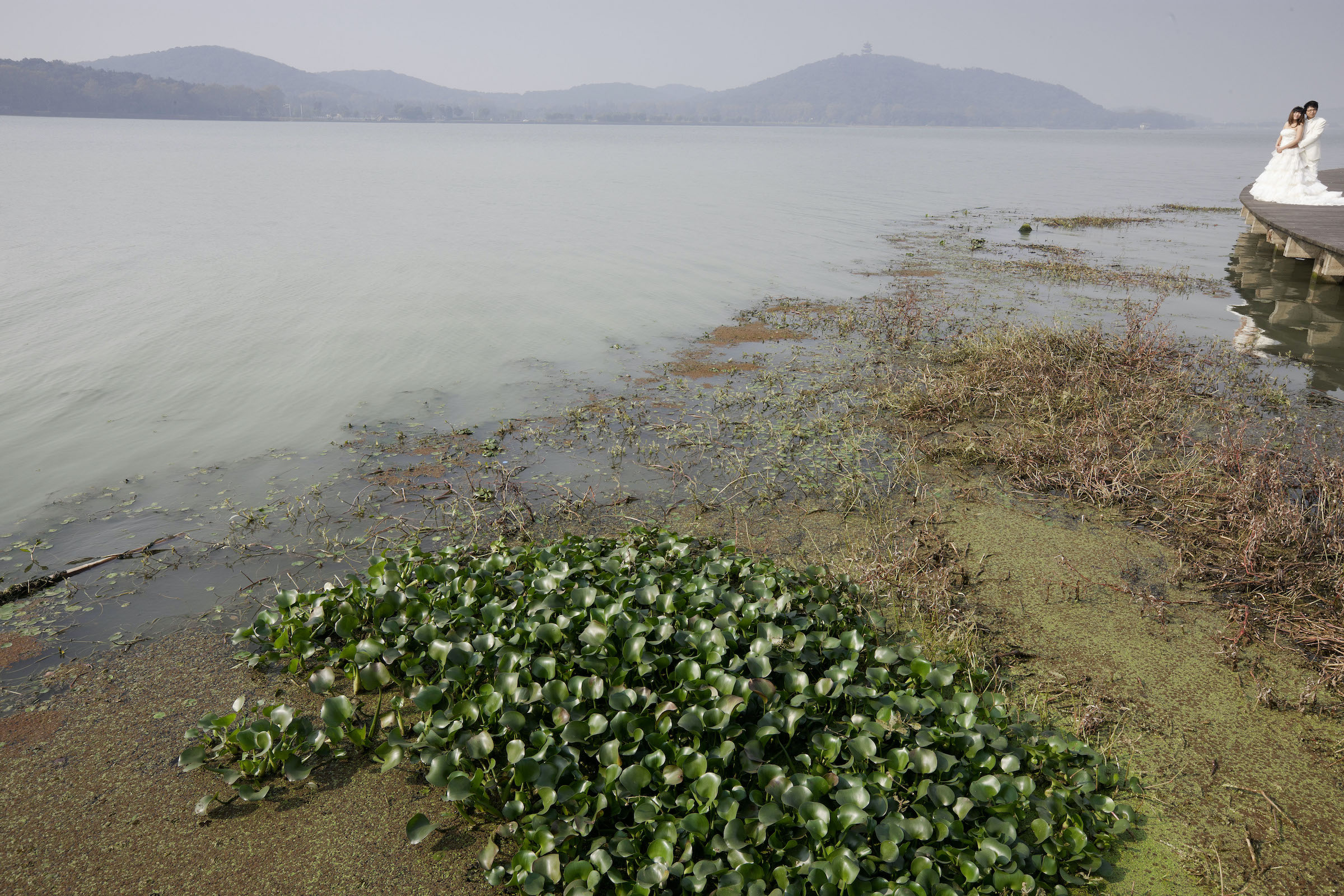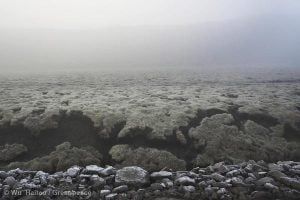Lake Tai, also known as Taihu, is China’s third-largest freshwater lake and one of its most important water resources. The 2,400-square kilometre lake, in south China, is the source of the Suzhou River. It also feeds the Huangpu River, the waterway that passes along Shanghai’s Bund, perhaps the country’s most famous riverfront.
The water channels that criss-cross the region around Lake Tai have become the arteries of economic development. It is no exaggeration to say the lake is the heart that drives the seven cities of Shanghai, Suzhou, Wuxi, Changzhou, Hangzhou, Jiaxing and Huzhou.
“Taihu is beautiful in winter,” said Wu Lihong, a resident of Zhoutie township on the lake’s west bank. From November to April, the algae that so often covers its surface disappears, and the water is left clean and clear. The cities around the lake have all chosen this period to hold events for tourists.
But Wu Lihong is well aware that beautiful winter days are not the whole story. He grew up by Taihu and has watched for 20 years as the lake has become steadily more polluted.
“Twenty years ago, the water was clear. I used to swim in it as a child,” said Wu, who is now 45. “But from about 1988, local fishermen started to find that the fish they caught here had a strange taste.” Wu discovered that many chemical plants around Zhoutie were dumping effluent straight into the lake. Rivers around Lake Tai gradually changed colour. Some turned milky-white, others black.
The economy in the south of Jiangsu started to boom in the 1980s, and this was when Lake Tai suffered the worst pollution.
Huang Xuanwei, formerly chief engineer at the Taihu Basin Agency, worked on the remediation of pollution in the lake from the 1980s. He recalls that, starting in 1987, some 36 billion tonnes of waste-water – half from Shanghai – were dumped into rivers and lakes in the region each year. Eighty percent of the waste-water was untreated.
By 1983, 40% of the total length of the rivers of the Taihu Basin was polluted, according to a pan-regional evaluation of water quality. By 1996, this figure had risen to 86%, higher than any other Chinese water system.
Lake Tai was severely damaged. Organic pollution at the water surface rose from 1% in 1987 to as much as 29.18% in 1994. From 1993, the entire lake suffered eutrophication, the process where an excess of nutrients such as nitrates and phosphates causes an algal bloom that removes oxygen and reduces water quality, causing fish and other organisms to die.
These algal blooms have become increasingly severe. The most serious crisis came in 2007. In June of that year, a bloom dozens of centimetres thick covered the entire lake. According to Wuxi government figures, plants supplying 70% of the city’s water were affected. Tap water turned yellow and foul. Drinking water for two million Wuxi residents was polluted. Since then, algal blooms have happened every year, despite major government efforts to clean up the lake.
In fact, policymakers were well aware of Lake Tai’s pollution problem long before the 2007 algal bloom. As early as 1991, the state launched its first project to clean up the lake and, over the subsequent 10 to 15 years, invested more than 10 billion yuan (US$1.6 billion) in the effort.
In 1998, the state approved the Taihu Environmental Management Plan and, in the same year, State Council ministries and the governments of Jiangsu, Zhejiang and Shanghai started a programme to tackle the pollution. The biggest part of this was an effort in late 1998 to push the 1,035 major polluters in the area to meet emission standards.
Although the authorities claimed to have in part achieved this goal, many doubted that real progress had been made. Then, at the turn of the new century, fresh monitoring data clarified the situation: the pollution damaging Lake Tai’s water had not stopped.
In 2005, a second round of remedial projects began. Huang Xuanwei explained that, during the first round, only 1% of the lake surface was polluted; by the time the second round got under way, that figure had reached 80%.
At the time of the algal bloom in 2007, Jiangsu was spending two billion yuan (US$317 million) a year treating Taihu’s pollution. In the five years between 2007 and the end of 2011, 2.8 million tonnes of algae was scooped out of the lake.
In May 2008, China allocated more than 111 billion yuan (US$17.6 billion) to a plan to improve the lake’s water quality from “class five” – the dirtiest category – to “class four”, and in places “class three”, by 2020. But the issue remains serious. On November 1 last year, China’s vice minister for water resources Li Guoying admitted that water quality at over 60% of water supply points in the Taihu Basin is below “class three”.
Pollution is not Taihu Basin’s only problem: it is also grappling with a lack of water. Years’ worth of data shows that the densely populated and developed Taihu region requires 37 billion cubic metres of water annually. But the average yearly supply from Taihu water sources is only 17.7 billion cubic metres, which on a per head basis works out around one fifth of the national average. There is an obvious gap to be filled.
The combination of pollution, water scarcity and flood-prevention considerations have forced Taihu to turn to the Yangtze River for help. In 2001, the central government called for large quantities of Yangtze water to be moved to the lake in a bid to improve water quality. Trial water diversions got underway in early 2002.
The project used an existing channel – the Wangyu River – to transfer the water. The idea was to get the water in the lake moving, increasing downstream flow and boosting the ability of the bodies of water in the Taihu Basin to cleanse themselves.
The Wangyu River flows along the border between Wuxi and Suzhou. In the north it connects to the Yangtze at Gengjingkou then flows through the lakes of Jialingdang and Caohu before reaching Lake Tai at Shadunkou. It is is 60.8 kilometres long.
Like an umbilical cord, the Wangyu brought water from the Yangtze River to heavily polluted Taihu in a trial in which the lake’s managers had vested high hopes. Their optimism appears to have been somewhat vindicated. Taihu Basin Agency figures from late 2011 indicate the transfusion from the Yangtze has improved water quality: permanganate levels have fallen 17% on 2007 levels, ammonium-nitrogen levels by 42%, and phosphorous and nitrogen levels by 12% each.
Taihu Basin Agency officials said the extra water from the Yangtze has reduced the water replacement period of Lake Tai from 300 days in 2002 to about 250 days, while river flow in affected areas has risen from 10 centimetres per second to between 20 and 30 centimetres per second. As of December 20 last year, 20.2 billion cubic metres of water had been transferred from the Yangtze.
But an employee of the agency admitted that, thanks to a long history of contamination, the lake cannot be cleaned up overnight: “If you don’t clean pollution up in the first decade, the process will take several times as long.”
Everybody wants to give Taihu back its clean water. For the authorities in charge of the lake, however, the problem is one of restricted powers: cleaning up polluting companies in the area has to be done by the local governments. The powers of the Taihu Basin Agency are limited to water quality – when it comes to dealing with the sources of pollution, it can only make proposals to local governments.
An article in the Journal of Lake Sciences explains that urban water supply, waste-water and water quality are managed by the urban development, public services and environmental authorities respectively. Meanwhile, the Taihu area spreads across the three provinces of Jiangsu, Zhejiang and Shanghai, with each province managing its own patch of land. As a result, “there is a disconnect between the basin and the region, and the authorities for the basin do not have regional control. Regional plans do not match up with plans for the Taihu Basin, and are often in conflict.”
There have been a number of attempts to break these constraints in recent years. But whether an effective plan for the basin will emerge – one that crosses regional administrative boundaries and is really able to help clean up Lake Tai – remains to be seen.
Liang Guorui and He Hanfu are reporters at Guangzhou Daily, where this article was originally published.
Translated by Roddy Flagg


